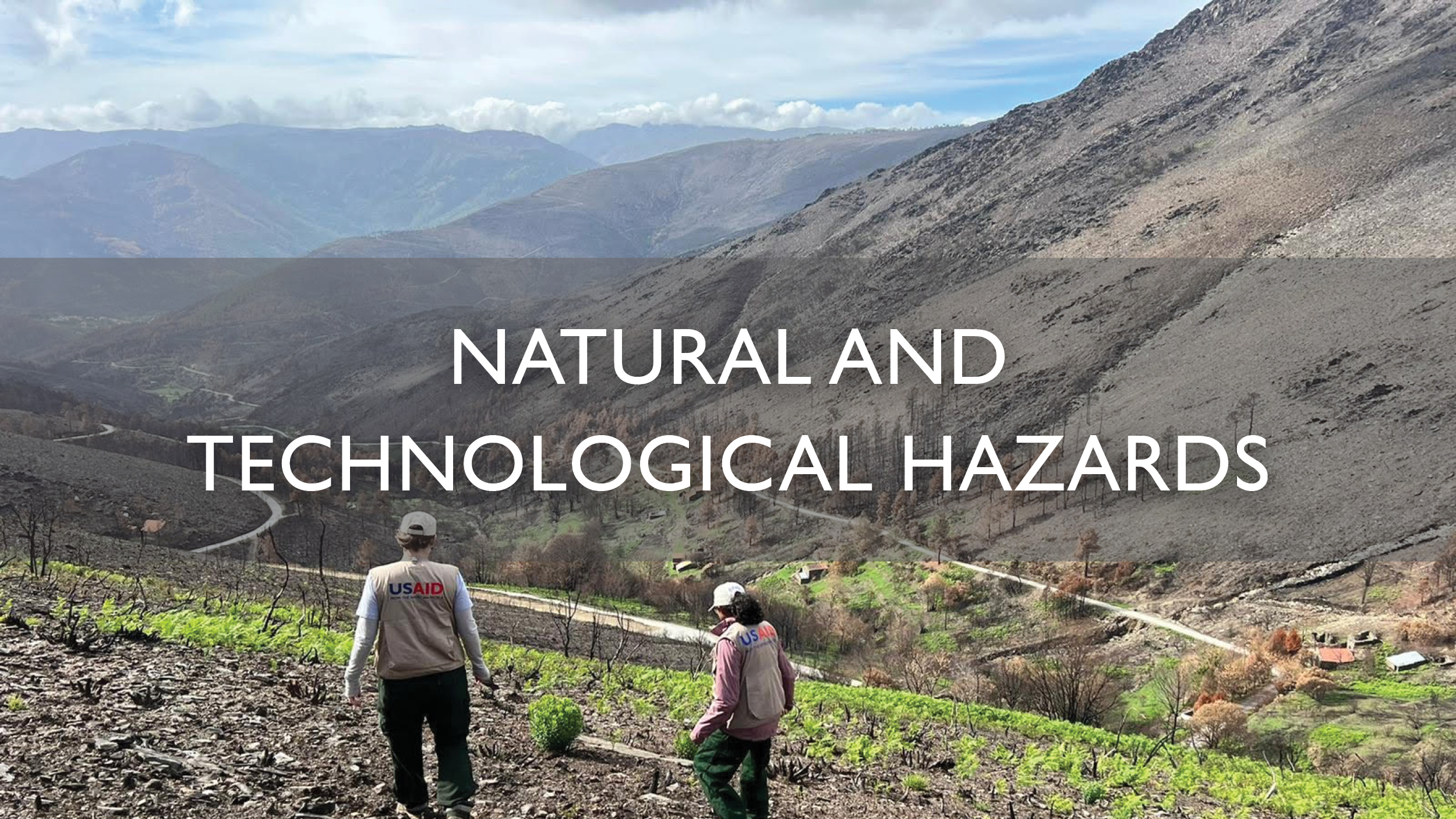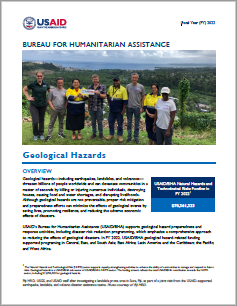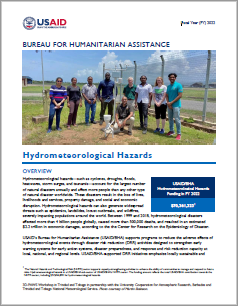
Geological hazards—including earthquakes, landslides, and volcanoes—threaten billions of people worldwide and can devastate communities in a matter of seconds by killing or injuring numerous individuals, destroying houses, causing food and water shortages, and disrupting livelihoods. Although geological hazards are not preventable, proper risk mitigation and preparedness efforts can minimize the effects of geological events by saving lives, promoting resilience, and reducing the adverse economic effects of disasters. USAID’s Bureau for Humanitarian Assistance (USAID/BHA) supports geological hazard preparedness and response activities, including disaster risk reduction programming, which emphasize a comprehensive approach to reducing the effects of geological disasters. In FY 2022, USAID/BHA geological hazard-related funding supported programing in Central, East, and South Asia; East Africa; Latin America and the Caribbean; the Pacific; and West Africa.
Hydrometeorological hazards—such as cyclones, droughts, floods, heatwaves, storm surges, and tsunamis—account for the largest number of natural disasters annually and affect more people than any other type of natural disaster worldwide. These disasters result in the loss of lives, livelihoods and services, property damage, and social and economic disruption. Hydrometeorological hazards can also generate widespread threats such as epidemics, landslides, locust outbreaks, and wildfires, severely impacting populations around the world. Between 1999 and 2018, hydrometeorological disasters affected more than 4 billion people globally, caused more than 500,000 deaths, and resulted in an estimated $2.2 trillion in economic damages, according to the Center for Research on the Epidemiology of Disaster. USAID/BHA supports programs to reduce the adverse effects of hydrometeorological events through disaster risk reduction activities designed to strengthen early warning systems for early action systems, disaster preparedness, and response and risk reduction capacity at local, national, and regional levels. USAID/BHA-supported disaster risk reduction initiatives emphasize locally sustainable and environmentally sensitive measures coordinated with vulnerable communities, as well as local and national stakeholders.


